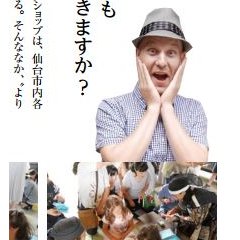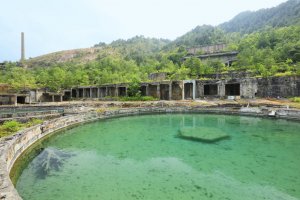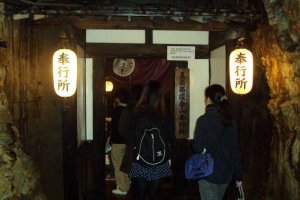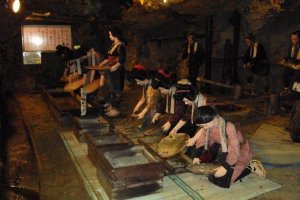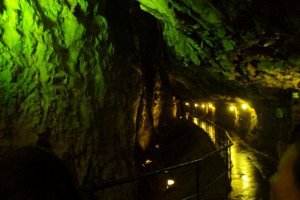The mines of northern Akita were once the largest of Japan, and at one time, the world. Osarizawa Mine, one of the most expansive mines in the area, has a history that runs as deep as its tunnels. The labyrinth of passages which snake their way through the Earth trace their origins back to 708AD! Enter the darkness and discover secrets of hidden wealth, hidden Christians, and hidden adventure.
Through the generations, advances in technology and a changing society dictated what happened at Osarizawa Mine. The Japanese miners dug through the earth originally looking for gold. At the beginning just a small amount could be extracted, some of which is said to have been used in Iwate's Hiraizumi World Heritage Site, a temple town so beautiful it is known as the "Kyoto of the East". The mine's true fortune, however, was thanks to its extensive copper deposits. The Great Buddha of Todai-ji in Nara is said to have been cast with materials from this mine. Naturally, at first picks, shovels, and elbow grease carved out human sized tunnels and chambers throughout the mountainous region. Gunpowder was introduced in 1865 under the guidance of an American, blowing away rock in seconds that would have taken weeks to dig out by hand. Production increased. The next technology marvel came with the onset of war. Massive mining machines and crude ore processors with 4,486 employees mobilized to remove a record 100,000 tons of material from the mine per month as Japan fought for survival and dominance in the Pacific and Asia. The mine closed in 1978 due to a depletion of mineable minerals and slumping prices. The mine is still open today as a historical and sightseeing location.
Osarizawa Mine is located in the picturesque hills and forests of northern Akita. When you see the old mining train car in the parking lot, you know you came to the right spot. A 1000-yen-per-adult ticket covers admission into the cavernous underworld. After entering, two things happen: your eyes become blurry as they adjust to the darker interior, and you begin to become very cold. The mine is a constant chill, so make sure to bring your jacket—even on a summer day. As you walk around the mine, a tour guide or your pamphlet will explain the vast history of the mine. Edo era rulers tried to squeeze every amount of profit from the mine, employing men and women to process ore by hand. Manikins scattered around the tunnels recreate scenes of ancient ore processing alongside modern workers with drills and hard hats to mimic the time the Mitsubishi Corporation owned the facilities. Also noteworthy is the story of the "Hidden Christians," believers who literally went underground to escape persecution—though many were discovered with grave consequences. There is even a 350 year old cross carved inside a narrow rock passageway. Believers of Japanese Shinto would pray at the shrine inside the mine for protection from accidents, tunnel collapses, and deadly poisonous gas. Nearby, a modern simple saké cellar uses the natural coolness to keep alcohol. After a 30 or 40 minute walking course, you see the light at the end of the tunnel.
And then you enter the gift shop. The store displays and sells gorgeous gems and precious stones that are from the area. There are also various key chains, postcards, and the expected souvenirs of local snacks. Sometimes the store gives free tea samples. For an additional fee you can try your own luck at finding gold. If you are lucky, you can find enough to pay for your trip. Past the store, but still inside the building, are rows of containers with water and silt. Here you can pan for gold. I found a few flecks and a nice green rock—there are all sorts of things inside that sand. You keep what you find, so pan quick before the 20 minute time limit is up. There is also a small restaurant on premises. There is also an industrial heritage walking tour outside the mine highlighting some old mining buildings and history outside if you want to get the most out of your trip.

